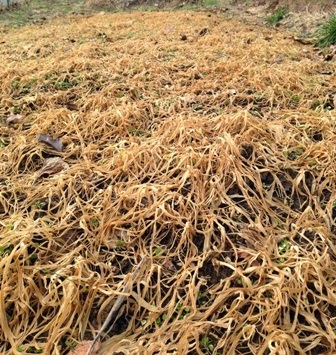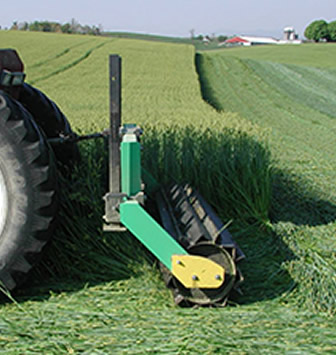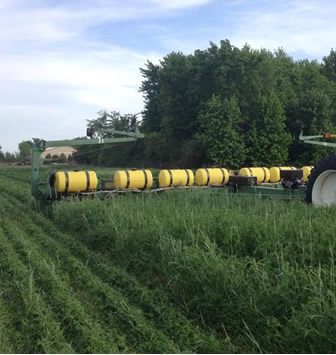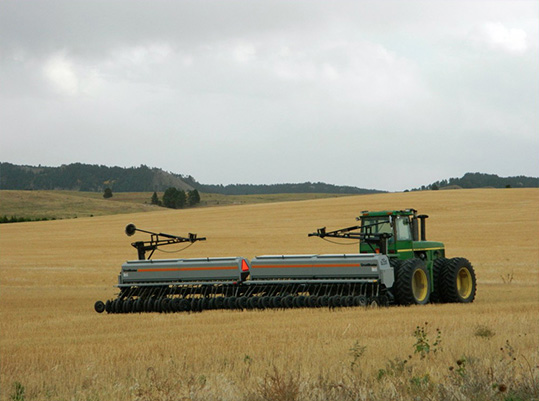Cover Crop Selection
There is a wide array of cover crops to choose from depending on an individual’s climate, crop rotation, equipment, management strategy, etc. The cover crop species that you choose will also depend on what your goals are. We are here to help match up your goals with the right cover crops based on your unique farming operation and climate. With the right seed blends, you can get the maximum benefit out of your cover crops to help kick start your way to healthy, productive, profitable soils.
For more information check out our Future of Farming
Planting
Cover crops can be planted in a number of ways and each has their benefits and limitations. How you plant your cover will depend on your crop rotations and equipment.
Drill/Planter:
The most effective and accurate way of planting to maximize seed to soil contact is to use a drill or a row crop planter. Placing seed directly in the soil increases chances of germination which requires lower seeding rates and in turn saves on seed costs and also allows for an even stand. Drilling or planting can also utilize soil moisture and does not necessarily require a rainfall for germination. The only downfall is you must wait until your cash crop is harvested in order to plant your cover which can become tricky with crops that are harvested late. This being said, there are cover crop species that deal well with late planting dates and can grow vigorously come spring.
Aerial Seeding:
The biggest advantage of aerial seeding is that you are able to seed into you cash crop prior to harvest so the cover has a longer time to establish while crops are drying down in the field. Another great thing about aerial seeding is the ability to fly the cover crops on, regardless of field conditions. This way you can utilize the moisture after a rainfall by getting that seed out there when it would not be possible with field equipment. The disadvantage of broadcasting seed this way is the potential for an irregular spread pattern. This can be a problem with light seeds, seed mixes with varying sizes of species, and high wind conditions while flying the seed on. It also requires getting water either from irrigation to rainfall, right before or sometime after flying on because the seed is laid on top of the soil and requires that moisture to germinate.
Highboy Seeder:
Many farmers have been adapting their highboy sprayers in order to interseed their cover crops into a standing cash crops. Similar to aerial seeding, this allows you to get your cover planted prior to harvest, but has the added benefit of getting an even seed spread with seed mixes, and better seed to soil contact. This method seems very promising when time is limited such as the case with corn/soybean rotations in the Midwest.
Broadcast:
Just as the title suggests, this method involves broadcasting seed before or after harvesting your cash crops. This works very well if you have the ability to incorporate the seed into the soil with very light tillage. When broadcasting without incorporation, we recommend increasing seeding rates by 20-25% to maximize chances of cover crop establishment.
No-Till, No-Spray Cover Crop Termination
While conventional producers always have the option to terminate their cover crops with herbicides, input costs can be reduced by alternative termination methods. By planting the right cover crop blends and utilizing the right management techniques, you can effectively grow and terminate your cover crop stand without tillage or the use of herbicides. The following management techniques allow for continuous, uninterrupted biological activity that is so crucial for healthy and productive soil that gets better over time instead of being depleted and “worn out”.






